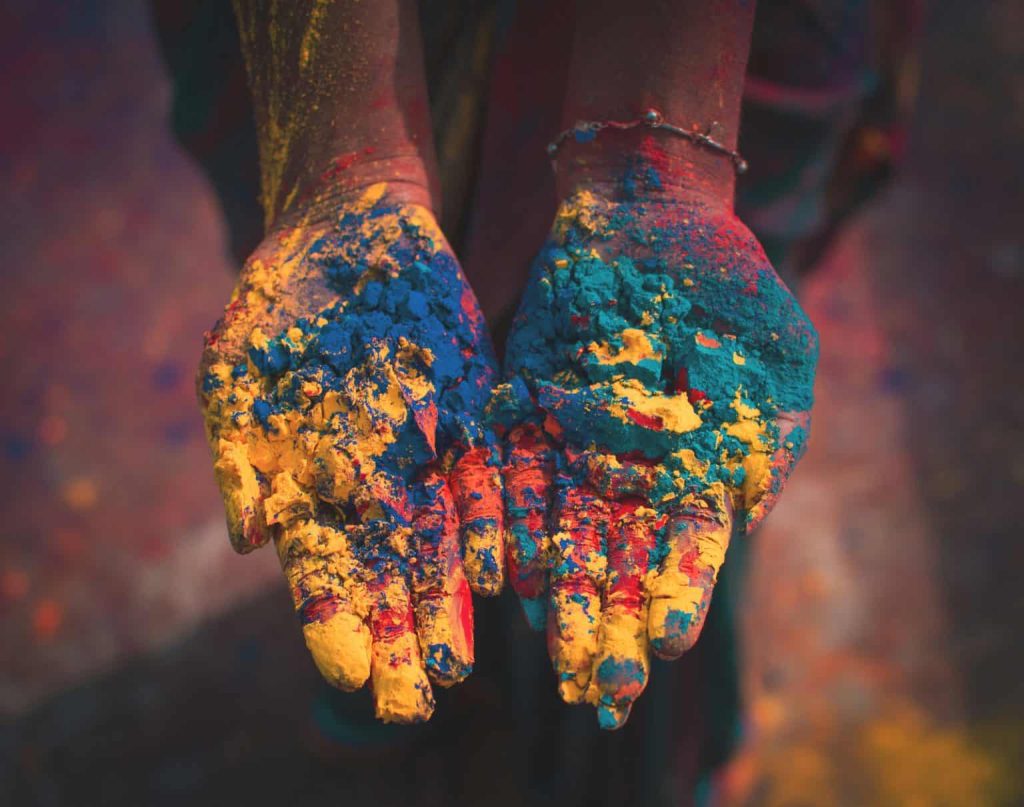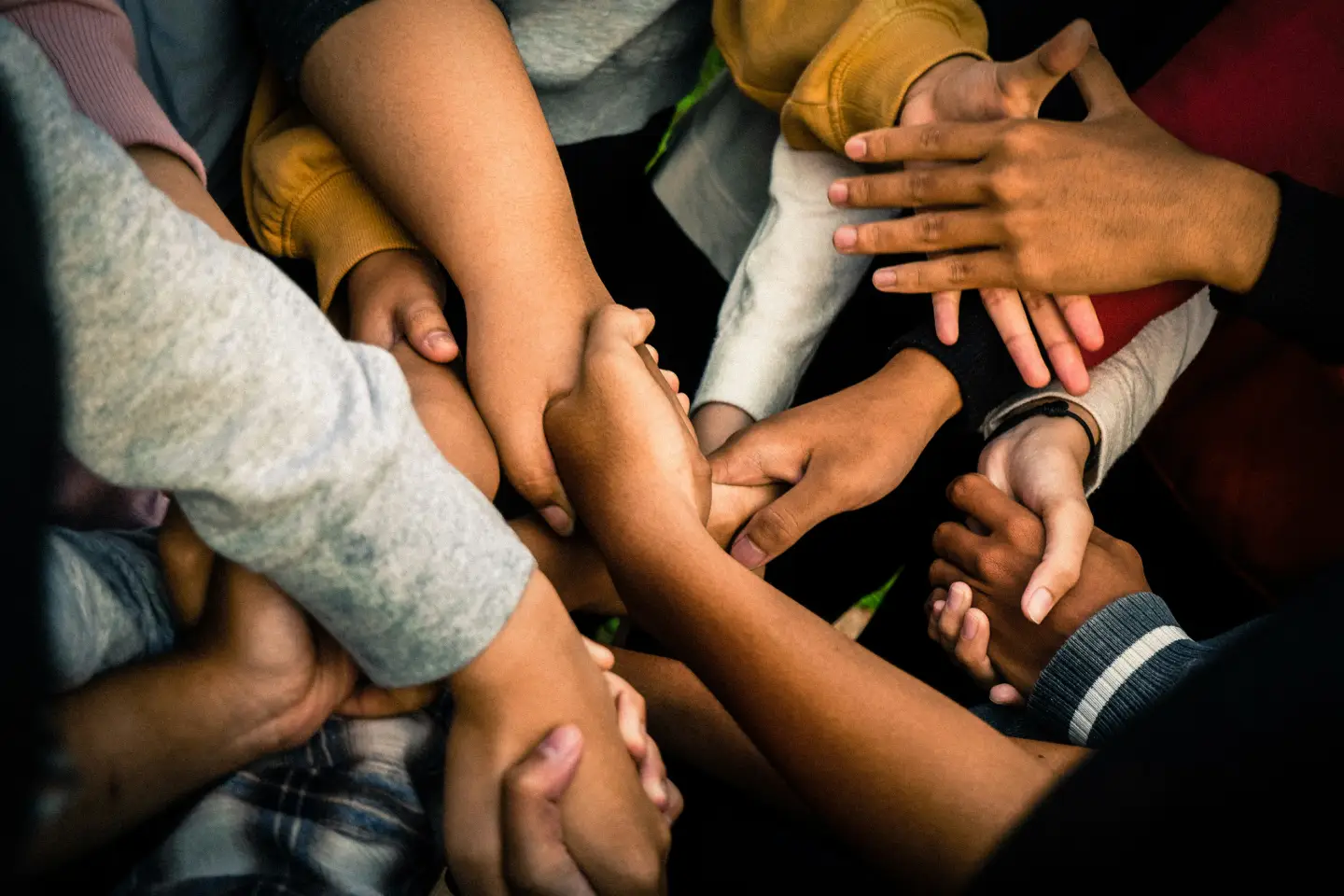Culture for Everyone: Enhancing Cultural Participation and Inclusion
Culture, the rich tapestry woven from traditions, beliefs, and artistic expressions, stands as a cornerstone of our collective identity. It serves as a vibrant mosaic, reflecting the diversity and depth of human experiences across the globe. Embedded within its myriad forms are stories, rituals, and symbols that shape our understanding of the world and imbue our lives with meaning. From the intricacies of language to the rhythm of dance, culture manifests itself in myriad ways, intertwining with our daily existence.
Despite its universal significance, cultural participation often encounters barriers that hinder its accessibility and inclusivity. Inequities rooted in socioeconomic status, geographic location, and historical marginalization can limit individuals’ ability to engage fully with cultural experiences. Such disparities not only deprive communities of the enriching benefits of cultural exchange but also perpetuate divisions and reinforce inequalities.
Recognizing the imperative of fostering accessible and inclusive cultural environments, we embark on a journey to explore the transformative power of cultural participation. By dismantling barriers and embracing diversity, we endeavor to cultivate vibrant spaces where every voice is heard, every story is celebrated, and every individual finds a sense of belonging. In this blog post, we delve into the significance of inclusivity in cultural engagement and offer insights into strategies aimed at amplifying cultural participation across diverse communities. Join us as we navigate the pathways toward a more equitable and enriching cultural landscape.

Photo by Debashis RC Biswas
The Importance of Accessible and Inclusive Culture
Accessible and inclusive culture underpins a just and equitable society, ensuring that individuals, regardless of background, can fully participate in cultural life. By dismantling barriers, cultural institutions and communities foster environments where diverse voices are heard and valued, promoting empathy, social cohesion, and a sense of belonging. Moreover, inclusive culture serves as a catalyst for innovation, harnessing the collective wisdom and perspectives of diverse communities to challenge conventional narratives and propel cultural evolution forward.
Beyond its moral imperative, accessible and inclusive culture is a strategic investment in societal well-being and prosperity. By broadening access to cultural opportunities, communities unlock the full potential of their human capital, fostering creativity, critical thinking, and civic engagement. This fosters a more dynamic and resilient society, better equipped to navigate the complexities of the 21st century. As we endeavor to create more equitable and inclusive cultural landscapes, we must prioritize the removal of barriers, the amplification of diverse voices, and the cultivation of environments where everyone can contribute to and benefit from the richness of cultural life.
Fostering Social Cohesion
An inclusive culture plays a pivotal role in fostering social cohesion within communities and societies. By actively breaking down barriers that often separate different groups, it creates an environment where individuals from diverse backgrounds can come together. Through initiatives that promote understanding, respect, and appreciation for various cultural perspectives, an inclusive culture acts as a catalyst for dialogue and collaboration. This dialogue serves to bridge cultural divides, diminish stereotypes, and cultivate empathy among members of the community. As people engage in meaningful exchanges and interactions, they develop a sense of belonging and shared identity, ultimately strengthening the bonds that unite them and contributing to a more cohesive and harmonious society.
Encouraging Self-Expression
Accessible culture serves as a powerful vehicle for encouraging self-expression among individuals from all walks of life. By providing platforms and opportunities for people to share their unique perspectives, experiences, and identities, it empowers marginalized communities and amplifies voices that may have been historically marginalized or silenced. Through artistic expression, storytelling, and various forms of creative outlets, individuals can articulate their truths, challenge societal norms, and assert their agency in shaping the cultural narrative. As diverse voices are celebrated and validated, a more inclusive and representative cultural landscape emerges, one that reflects the richness and complexity of human experiences and fosters a greater sense of belonging and acceptance for all.
Driving Economic Growth
Cultural participation is not only essential for social cohesion but also plays a significant role in driving economic growth and prosperity. By investing in diverse artistic expressions and creative endeavors, communities can stimulate innovation, spur entrepreneurship, and generate new economic opportunities. Cultural industries, including the arts, entertainment, tourism, and heritage sectors, contribute significantly to job creation, revenue generation, and overall economic vitality. Cultural events, festivals, and attractions serve as magnets for tourism, drawing visitors from near and far and infusing local economies with spending and investment. Moreover, the cultivation of a vibrant cultural ecosystem enhances a community’s competitive edge, making it more attractive to businesses, investors, and skilled workers seeking dynamic and culturally enriched environments in which to live, work, and thrive. As such, fostering a climate that celebrates and supports cultural diversity not only enriches the social fabric of a society but also drives sustainable economic growth and prosperity for all.

Photo by Himanshu Singh Gurjar
Strategies for Enhancing Cultural Participation
Enhancing cultural participation among diverse communities necessitates a multifaceted approach that acknowledges and respects various cultural backgrounds. Firstly, fostering an inclusive cultural environment involves providing accessible avenues for participation. This can include offering events and programs in multiple languages, ensuring physical spaces are accommodating to people with disabilities, and promoting cultural events through diverse channels to reach a wider audience. Moreover, engaging local community leaders and organizations is crucial for understanding the specific needs and interests of different cultural groups. Collaborating with these stakeholders can help tailor programs and events to better resonate with diverse communities. Additionally, offering educational initiatives that celebrate cultural diversity and promote cross-cultural understanding can encourage broader participation. This could involve workshops, lectures, and cultural exchanges that showcase the richness of different traditions and perspectives. Furthermore, utilizing technology and digital platforms can expand access to cultural experiences, allowing individuals to engage in activities remotely and connect with others virtually. Overall, by implementing these strategies with intention and commitment, communities can cultivate a more inclusive cultural landscape where everyone feels valued and represented.
Removing Financial Barriers
Financial barriers often serve as significant obstacles preventing individuals from engaging in cultural activities. Many people, particularly those from lower-income backgrounds, may find themselves unable to afford tickets to events or admission fees to museums and galleries. By implementing progressive policies such as subsidized tickets, offering designated free museum days, and providing grants and funding opportunities for artists, societies can effectively dismantle these financial barriers. Subsidized tickets make cultural events more affordable, free museum days open up access to those who might otherwise be excluded due to financial constraints, and grants for artists empower them to create and share their work with a wider audience.
Promoting Cultural Education
Cultural education plays a pivotal role in fostering appreciation, tolerance, and understanding among individuals from diverse backgrounds. Schools, community centers, and cultural institutions play vital roles in providing opportunities for cultural education. They can offer a range of courses, workshops, and exhibitions that expose people to various cultural expressions, traditions, and histories. Through interactive learning experiences and exposure to different forms of art, music, literature, and performance, individuals gain insights into the richness and diversity of human culture. Cultural education not only enhances individual awareness and understanding but also contributes to the development of cohesive and inclusive communities.
Encouraging Community Engagement
Community engagement is essential for ensuring that cultural activities are inclusive, relevant, and responsive to the needs and interests of diverse populations. Engaging communities in the planning, development, and implementation of cultural initiatives fosters a sense of ownership and belonging. Communities can be consulted to identify cultural preferences, traditions, and priorities, which can inform the design and delivery of cultural programs and events. Creating platforms for community-led cultural projects empowers local residents to showcase their talents, share their stories, and celebrate their cultural heritage. By fostering meaningful partnerships between cultural organizations and communities, societies can cultivate vibrant and dynamic cultural landscapes that reflect the voices and experiences of all members.
Making Spaces Accessible
Physical accessibility is a fundamental aspect of ensuring that cultural venues and events are inclusive and welcoming to all individuals, regardless of their physical abilities. Many cultural venues, such as museums, theaters, and concert halls, may present architectural barriers that limit access for people with disabilities. Implementing measures to enhance physical accessibility, such as installing ramps, elevators, and designated parking spaces, can enable individuals with disabilities to navigate cultural spaces independently and participate fully in cultural activities. Additionally, providing alternative formats for experiencing cultural content, such as audio descriptions and tactile exhibits, ensures that people with sensory impairments can engage with cultural offerings on an equal basis with others. By prioritizing accessibility in the design and management of cultural spaces, societies can uphold principles of equity, diversity, and inclusion, and ensure that culture truly belongs to everyone.

Photo by Seth Doyle
Advancing Digital Access to Culture
The intersection of technology and culture presents unprecedented opportunities for enhancing accessibility and engagement. With the proliferation of digital platforms and tools, individuals worldwide can now immerse themselves in a diverse array of cultural experiences regardless of geographical constraints. From virtual museum tours and online archives to interactive exhibits and digital storytelling, technology has democratized access to cultural heritage and knowledge. Moreover, digital platforms facilitate the preservation and dissemination of cultural artifacts, traditions, and languages, ensuring their longevity and relevance in an ever-evolving society. Through initiatives like digitization projects and online cultural exchanges, communities can share their unique narratives and perspectives with a global audience, fostering cross-cultural understanding and appreciation. As technology continues to evolve, the potential for advancing digital access to culture remains boundless, promising to enrich lives, preserve heritage, and bridge cultural divides in an increasingly interconnected world.
Virtual Tours and Online Exhibitions
Museums, galleries, and heritage sites have embraced the digital age by offering virtual tours and online exhibitions. Through immersive experiences, individuals who are geographically distant or physically unable to visit these places can now explore and appreciate cultural artifacts from the comfort of their own homes. These virtual tours provide a dynamic and interactive way to engage with art and history, allowing users to navigate through exhibitions, zoom in on specific details, and gain insights into the significance of various pieces. By breaking down barriers to access, virtual tours and online exhibitions democratize cultural experiences, making them accessible to a global audience.
Digital Archives
In an increasingly digital world, digital archives play a crucial role in preserving and providing access to cultural resources. These archives serve as repositories for a wide range of materials, including historical documents, photographs, films, and music. By digitizing cultural artifacts, institutions ensure their long-term preservation and facilitate research and exploration by scholars, historians, and enthusiasts alike. Digital archives democratize access to cultural heritage, allowing anyone with internet access to delve into the rich tapestry of human history and creativity. Moreover, they enable collaborative efforts to curate and contextualize cultural materials, fostering a deeper understanding and appreciation of diverse cultural traditions and narratives.
Social Media Platforms
Social media platforms have become powerful tools for sharing cultural content, engaging with audiences, and fostering online communities around cultural topics. Museums, galleries, artists, and cultural institutions utilize platforms like Facebook, Instagram, Twitter, and TikTok to showcase exhibitions, share behind-the-scenes glimpses, and connect with followers in real-time. Through compelling visual storytelling and interactive features, social media platforms enable cultural organizations to reach a global audience, generate excitement around upcoming events, and spark conversations about art, history, and heritage. By leveraging the viral nature of social media, cultural institutions can amplify their reach and impact, inspiring curiosity, creativity, and dialogue among diverse audiences.

Photo by Clay Banks
Building Cultural Competence and Sensitivity
Building cultural competence and sensitivity is crucial for fostering inclusion in cultural activities. Cultural competence involves effectively interacting with people from diverse backgrounds, while cultural sensitivity requires awareness and respect for different cultural norms and practices. Education and training programs play a vital role in developing these skills by raising awareness of cultural biases and teaching intercultural communication strategies. Exposure to diverse perspectives through multicultural events and interactions further enhances understanding and empathy. To promote cultural competence and sensitivity, cultural institutions must actively incorporate diverse voices and perspectives into their programming and spaces. This includes featuring multicultural content in exhibitions, events, and online platforms while also accommodating the needs of individuals from various cultural backgrounds. By prioritizing inclusivity and equity, communities can create environments where everyone feels valued and empowered to participate fully in cultural activities, enriching collective experiences and promoting mutual understanding.
Culturally Responsive Programming
Culturally responsive programming is a multifaceted approach aimed at fostering inclusivity and representation within artistic spaces. By embracing the rich tapestry of diversity within a community, cultural activities are designed to resonate with various ethnicities, backgrounds, and traditions. Through this approach, organizers seek to bridge gaps and celebrate the mosaic of cultural identities present within the community. For instance, events may showcase a variety of cultural performances, art exhibitions, or culinary experiences that highlight the unique heritage and contributions of different groups.
Incorporating diverse cultural traditions, languages, and perspectives is fundamental to the ethos of culturally responsive programming. It involves thoughtful curation and engagement with community members to ensure authenticity and relevance. By embracing multiple languages, organizers strive to make events accessible and inclusive to non-native speakers, fostering a sense of belonging and participation across linguistic boundaries. Furthermore, by incorporating diverse perspectives, programming can challenge stereotypes and broaden audience understanding of different cultures, fostering empathy and cross-cultural dialogue.
Staff Training
Staff training plays a crucial role in supporting the implementation of culturally responsive programming. By equipping staff with the necessary tools and knowledge, organizations can ensure that individuals from all backgrounds feel valued and respected within artistic spaces. Cultural competence training involves raising awareness of unconscious biases and prejudices that may influence interactions and decision-making processes. Through interactive workshops and discussions, staff members learn to recognize and address their own biases, fostering a more inclusive and equitable environment.
Sensitivity to cultural norms and practices is also a key component of staff training. By understanding the nuances of diverse cultural etiquettes, gestures, and communication styles, staff members can navigate interactions with greater cultural competency and sensitivity. This involves recognizing and respecting cultural differences in areas such as greetings, body language, and personal space, thereby fostering meaningful connections and reducing the risk of misunderstandings or offense.

Photo by Furdi De Rivera
Conclusion
Creating an inclusive culture is a collective effort that requires the active participation of individuals, communities, and institutions. We can create a culture that reflects and celebrates our diverse society by removing barriers to cultural involvement, leveraging digital technologies, and building cultural competence. The road to cultural inclusivity may be challenging, but the rewards are immense. Inclusive culture enriches our collective cultural life, fosters mutual understanding, and creates a society where everyone can express themselves and engage with others through culture. Let’s continue to strive for a culture that truly belongs to everyone.
Promoting cultural participation and inclusion is not just about fairness; it’s about enriching our collective cultural life. By making culture more accessible and inclusive, we can foster social cohesion, encourage self-expression, and stimulate economic growth. We must continue striving for cultural equity, ensuring everyone can participate in and contribute to our shared culture. With commitment and effort, we can create a cultural environment that truly reflects the diversity and richness of our society.
Step into a realm where innovation meets tradition, and creativity knows no bounds. Our previous blog is a captivating exploration of “Empowering Artists and Cultural Professionals: Unleashing Creativity and Strengthening the Cultural and Creative Sectors“.







